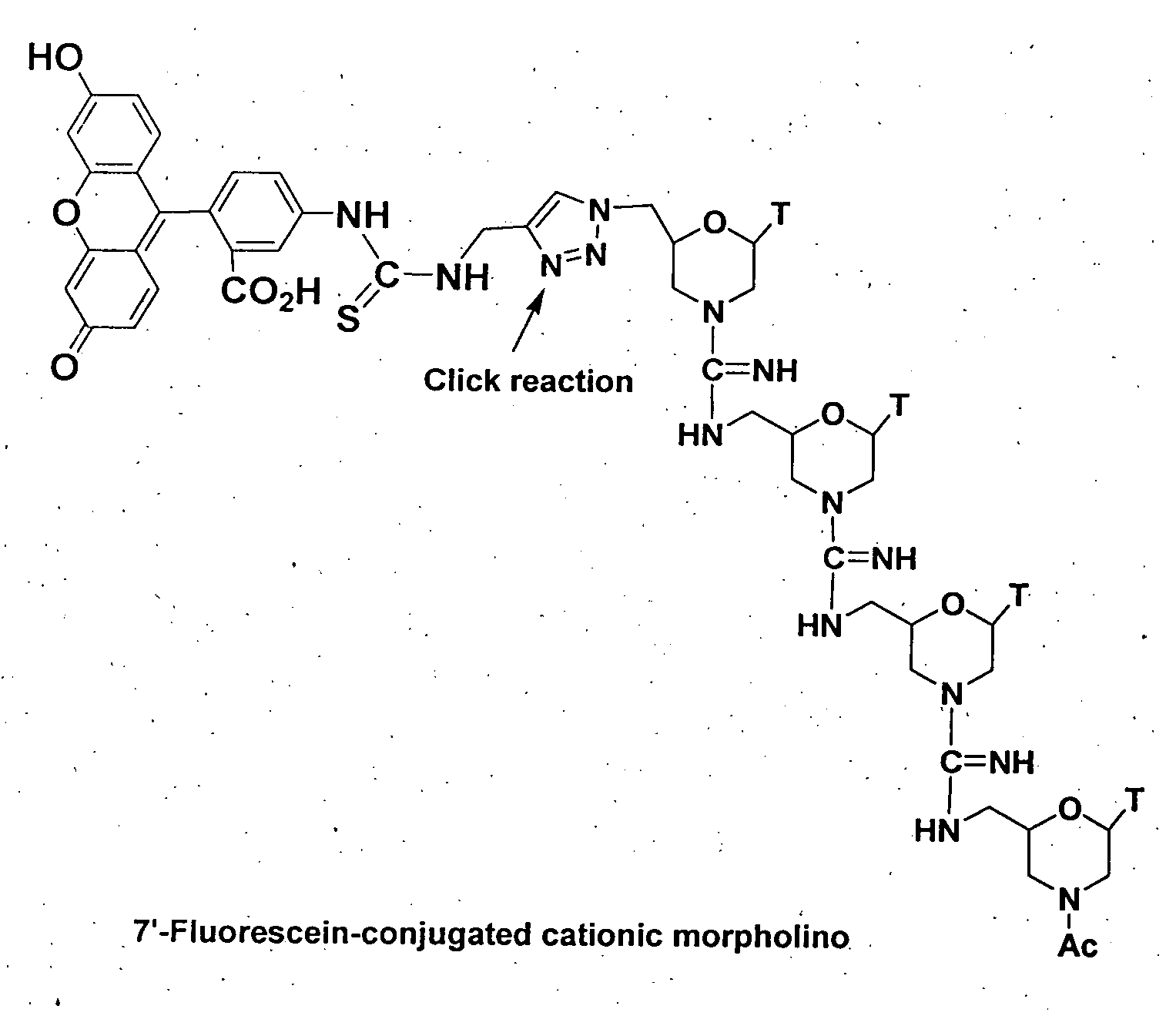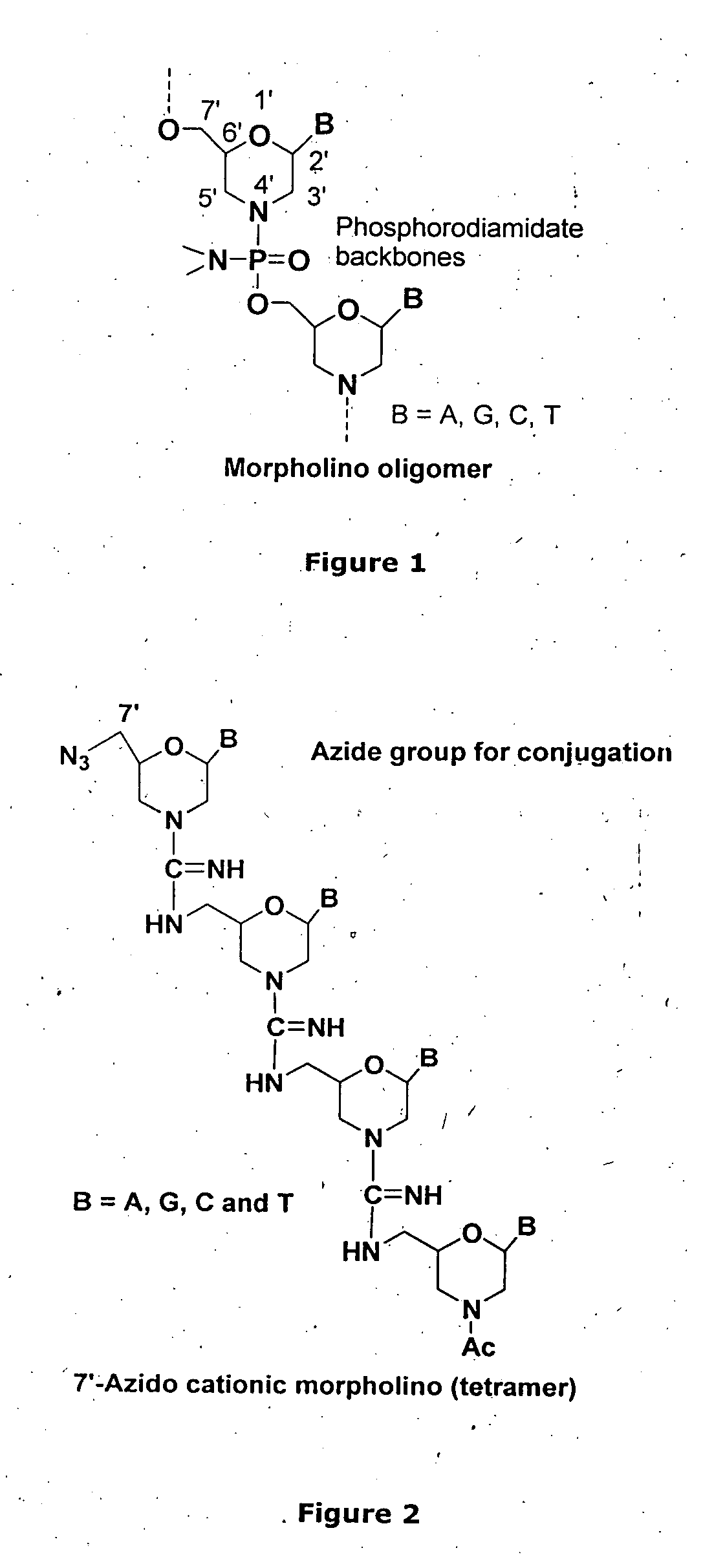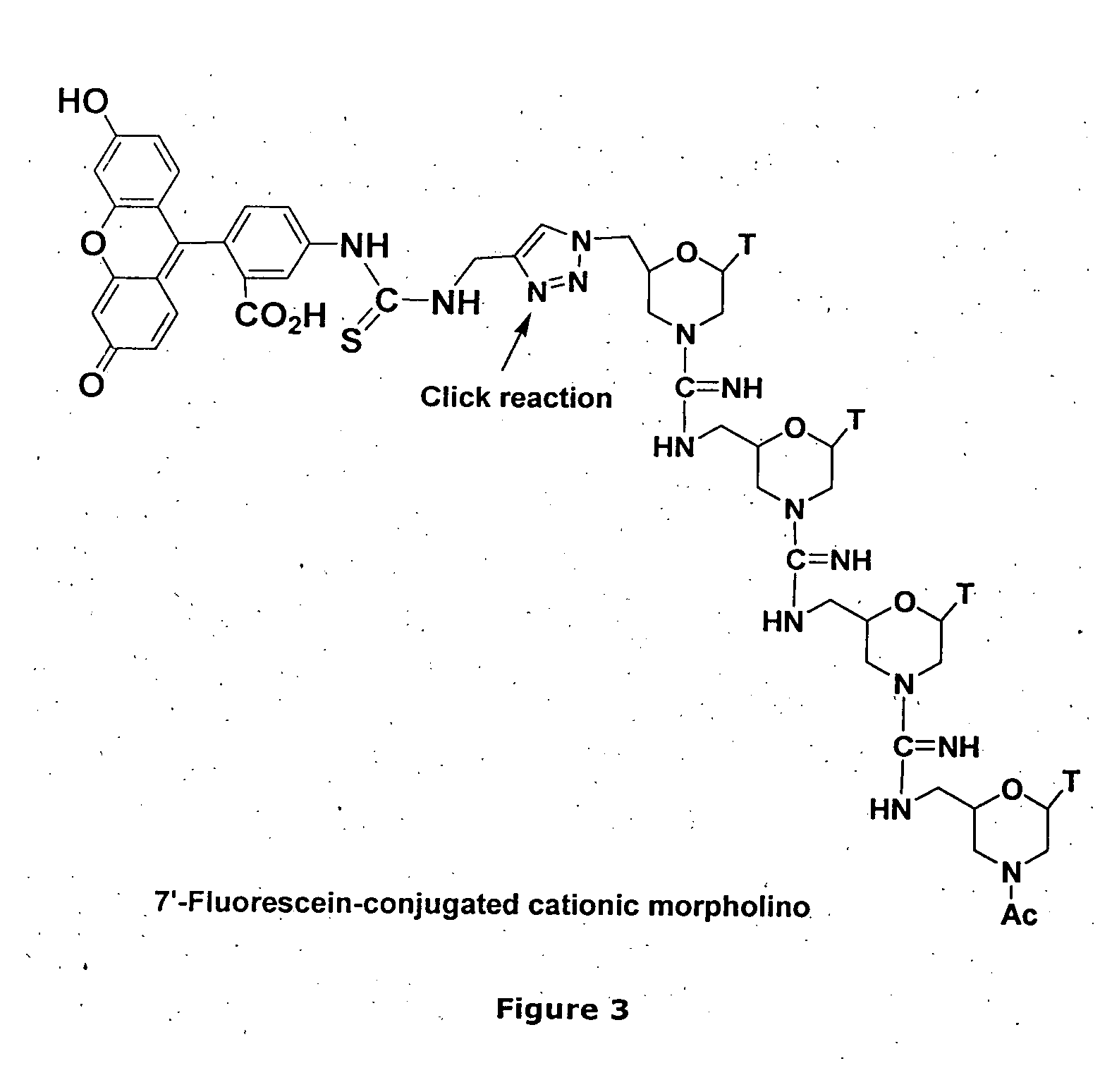Morpholino-based antisense agent
a morpholino-based, anti-sense agent technology, applied in the field of morpholino-based antisense agents, can solve the problems of poor morpholino transfection properties, complicated synthesis and purification, and limited applicability, so as to facilitate cellular transfection properties, avoid conjugation, and increase activity and selectivity
- Summary
- Abstract
- Description
- Claims
- Application Information
AI Technical Summary
Benefits of technology
Problems solved by technology
Method used
Image
Examples
example 1
[0176]Synthesis of Morpholino Monomers 1, 2 3, 4, 5, 6; 7 and 8 in FIG. 8 (Scheme-1):
[0177]The synthetic route is different from the previously reported (U.S. Pat. No. 5,185,444, Gene Tools LLC and Nature Chemical Biology. 2007, 3, 650 by Chen et. al.).
[0178]The unprotected ribonucleosides (A, G, C, T & I) were first converted to the 5′OTBDPS (tert-butyl-diphenylsilyl-) protected nucleosides and then used for morpholino synthesis.
[0179]7′-O-TBDPS-N-trityl morpholino thymine (1). To a stirred solution of 5-methyl uridine (7.75 mmol) in dry DMF (8 ml) were added imidazole (19.33 mmol) and TBDPSCI (9.79 mmol) dropwise under Ar. The mixture was stirred at room temperature for 4 h. After the disappearance of the starting material (TLC), 2 ml of MeOH was added to the mixture, and was stirred at room temperature for 10 min. The solvent was removed in reduced pressure. The residue was dissolved in EtOAc (50 ml) and washed thoroughly with water (20 ml×3) and brine (20 ml). This was dried ove...
example 2
[0257]Synthesis of 7′-Activated Monomers 9a, 9b, 9c & 9d in FIG. 9 and morpholino Oligomers 23 with Neutral Backbone in FIG. 1:
[0258]The 7′-activated monomers (FIG. 9) and morpholino oligomers (FIG. 1) were synthesized according to the procedure reported by Gene-Tools U.S. Pat. No. 5,185,444, 1993 and Chen, et. al. in Nature Chemical Biology. 2007, 3, 650 (Scheme-6).
example 3
[0259]Synthesis of 7′-amino Morpholino Monomers 10a, 11a, 12a & 13a in FIG. 10 which are Used for the Synthesis of Cationic-Morpholino-Oligomers:
[0260]The monomers 1a, 2b, 3b and 4b (reported in FIG. 8) (0.50 mmol) were treated with mesylchloride (0.60 mmol) in pyridine (10 ml) and the mesylated product was converted to the 7′-azido-unit in the presence of NaN3 (1 mmol), DMF (10 ml) and NH4Cl (1 mmol). The azide was converted to the corresponding amine (10a, 11a, 12a & 13a) by the reduction with 10% Pd / C / H2 (60 psi) (Scheme-2). The overall yield was from 34-45% in this process.
PUM
| Property | Measurement | Unit |
|---|---|---|
| Temperature | aaaaa | aaaaa |
| Fraction | aaaaa | aaaaa |
| Fraction | aaaaa | aaaaa |
Abstract
Description
Claims
Application Information
 Login to View More
Login to View More - R&D
- Intellectual Property
- Life Sciences
- Materials
- Tech Scout
- Unparalleled Data Quality
- Higher Quality Content
- 60% Fewer Hallucinations
Browse by: Latest US Patents, China's latest patents, Technical Efficacy Thesaurus, Application Domain, Technology Topic, Popular Technical Reports.
© 2025 PatSnap. All rights reserved.Legal|Privacy policy|Modern Slavery Act Transparency Statement|Sitemap|About US| Contact US: help@patsnap.com



